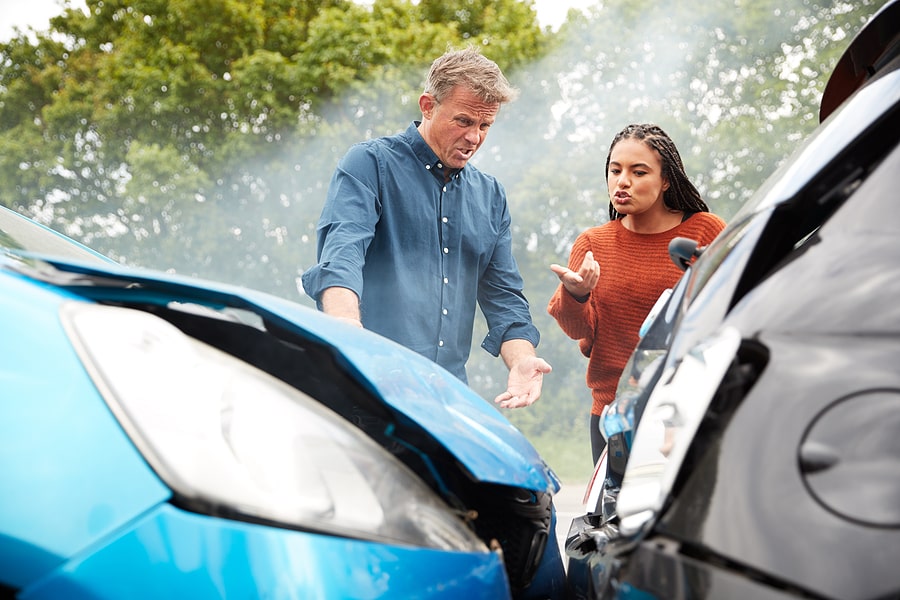Suing an Uninsured Driver for Damages
With more than 386,000 total lane miles in California, residents of this state rely on their vehicles to take them to work, school, and all the adventures this region has to offer. Unfortunately, with more vehicles on the roads, there are often more accidents. Equally unfortunate is that more than 16 percent of the drivers operating motor vehicles on the roadways of California are doing so without insurance.
If an uninsured driver injured you, you can still sue them. However, for the reasons discussed below, your case will likely be a lot more complex. An experienced car accident lawyer can explore your legal options and seek the maximum compensation available in your case.
The Importance of Insurance in Car Accident Injury Claims
What is the one factor that most impacts the value of a car accident claim? Is it the severity of the injury? The clarity of liability? The income of the injured party before the accident? Those are all indeed factors that can affect the value of your claim.
The most important factor of all, however, is sometimes how much insurance the at-fault party has. Insurance pays nearly all car accident settlements and awards.
Reasons Why Drivers Choose to Drive Without Insurance
California requires most drivers to purchase an auto liability policy with coverage of:
- $15,000 for injury or death to one person.
- $30,000 for the injuries or deaths of more than one person.
- $5,000 for property damage.
The main reason why drivers drive without insurance is that they can’t afford it. The average driver in California pays around $256 a month—or $3,076 a year—for insurance. There is, however, a low-cost auto insurance program offered by the state available for drivers 16 and over who have a good driving record, drive a vehicle valued at $25,000 or less, and meet income eligibility requirements.
Other reasons for uninsured drivers include:
- Youth. Young people are among the largest groups of uninsured drivers in California. Unfortunately, these drivers—who often choose to drive without insurance because they believe they are safe enough drivers to justify not paying for the expense of it—generally don’t know the true costs of car accidents.
- They figure your insurance will cover your damages. Uninsured drivers often think that it is pointless to pay for insurance when other drivers have insurance that can pay for their injuries and property damage. However, that is not always the case. Drivers with uninsured/ underinsured motorist coverage on their policies can obtain compensation through their insurance. However, most other drivers cannot.
- They would rather pay the fine. Many uninsured drivers in California take the calculated risk that they are not likely to get caught driving without insurance. If they do get caught, they believe the fine would be cheaper than the insurance. The penalties for driving without insurance include a fine of $250 plus penalty assessments for the first conviction, and impoundment of the driver’s vehicle. The consequences worsen with subsequent convictions. However, penalties and fines aren’t the biggest risks facing uninsured drivers, injuring or killing someone in an accident are.
What Happens If the Driver Is Uninsured?
If an uninsured driver injured you, remain on the scene to exchange contact information with the driver as required by law.
The information that the law requires drivers to exchange with one another after an accident includes:
- Driver’s name and current address.
- Driver’s license number.
- Vehicle identification number.
- Name and current address of the vehicle’s registered owner, if different than the driver.
The driver is also required to provide the name of their insurance carrier and policy number, which they will be unable to do. Collect as much information as possible, and be sure to provide your information and take pictures of the damage of both vehicles, if you can. If your injuries prevent you from exchanging information with the other driver, you should seek medical attention. In all likelihood, the police report of the accident will contain the necessary information.
Normally, when it comes time to seek compensation for the expenses and impacts of a car accident, your attorney would send a demand package to the at-fault party’s insurance provider. This package details the accident and shows the expenses you incurred, along with the full value of your claim and a demand for payment. The insurance provider then can either choose to admit to their insured’s liability and process the claim, deny the claim and provide notification to the claimant along with a reason for the denial, or offer a settlement. A settlement is a sort of compromise, where the insurance company admits to liability but offers to pay less than the value of the claim.
While you do not have an insurance company to send your demand to, you do have three potential options to consider, as described below.
Suing an Uninsured Driver
California allows those injured in car accidents to use the civil court system to seek compensation from uninsured drivers for the expenses and quality-of-life impacts they incurred. To do so, you must file your claim in court within two years of the accident.
The difficulty in suing an uninsured driver is not in filing a claim against them or even in obtaining a judgment in your favor if the facts of the case warrant it. The difficulty, rather, is in collecting your award, as many uninsured drivers cannot afford to pay for injury expenses out-of-pocket. You might collect the debt by garnishing the at-fault party’s wages, which can only happen if the at-fault party remains employed and their employer doesn’t pay them in cash.
Suffice it to say: attempting to collect compensation from an uninsured driver is often a long and difficult task.
Filing a Claim with Your Insurance
If you purchased uninsured/underinsured motorist coverage, this is often the easiest way to obtain compensation after an accident. However, insurers don’t generally offer this coverage with standard policies in California, but as add-on coverage.
The two incidents that qualify for coverage under this policy include:
- Uninsured coverage, which comes into play if the at-fault party in your accident did not have insurance or left the accident scene before providing their insurance information to you.
- Underinsured coverage, which you can assess if the damages you incurred in the accident exceed the limits of the at-fault party’s liability policy. Remember, drivers in California only must obtain $15,000 worth of bodily injury coverage per person, $30,000 per accident, along with $5,000 in property damage liability. Any injury that results in hospitalization and totals a vehicle worth more than $5,000 will exceed the limits of a minimum coverage policy in this state.
Other types of add-on insurance coverage that you have in your policy can also help provide compensation for your expenses, such as personal injury protection (PIP) or Med-Pay policies. Additionally, if you have health insurance coverage from your employer, that can also assist with the medical expenses associated with your injury.
An experienced car accident lawyer might file a first-party claim against your own insurance company in addition to helping you file a third-party claim against an at-fault party’s insurance policy. Many individuals believe that because they seek compensation from their own insurance company, they will meet with immediate compassion, loyalty, and quick service. Unfortunately, insurance companies are no more willing to pay the claims of their insureds as they are to pay third-party claims. An experienced attorney can help make this process easier for you.
Suing Additional (and Insured) Liable Parties
California follows a pure comparative negligence system. This means that more than one party can contribute to an accident, with each party taking responsibility for compensating a portion of the claim according to the percentage of liability they bear.
One of the services a car accident attorney can assist you with is determining all sources of liability and all insurance resources that can provide your compensation. Just because the registered owner of the car did not have insurance, perhaps another liable party does.
Examples of other parties who could be potentially liable for your accident include:
- The at-fault driver, if different than the registered owner of the vehicle. In some cases, the at-fault driver’s own auto insurance will cover liability even when driving someone else’s car when the accident occurred.
- Other drivers whose careless actions contributed to the accident.
- The governmental agency tasked with maintaining the roadway, if a road defect partly caused the accident.
- The manufacturer or distributor of parts used in either of the vehicles, if a vehicle defect factored into the accident.
- A business establishment who knowingly supplied alcohol to someone they knew or had reason to know was a minor.
Can an Uninsured Driver File a Claim on Your Policy?
Let’s say an uninsured driver injured you. You provided your information to the driver as required by law, and now the driver says that you caused the accident and wants compensation through a claim on your policy. Can that happen?
Yes. In California, uninsured drivers can file a third-party claim on your insurance policy. When this happens, your insurance company will investigate the claim just as they would with any other claim and—if they determine that you were liable—will pay the uninsured driver.
However, the police will undoubtedly learn about the driver’s lack of insurance and the driver may face consequences for driving without insurance. Additionally, the insurance provider will contact you to get your side of the story and obtain any other evidence you gathered, such as photos of the damage to each vehicle.








